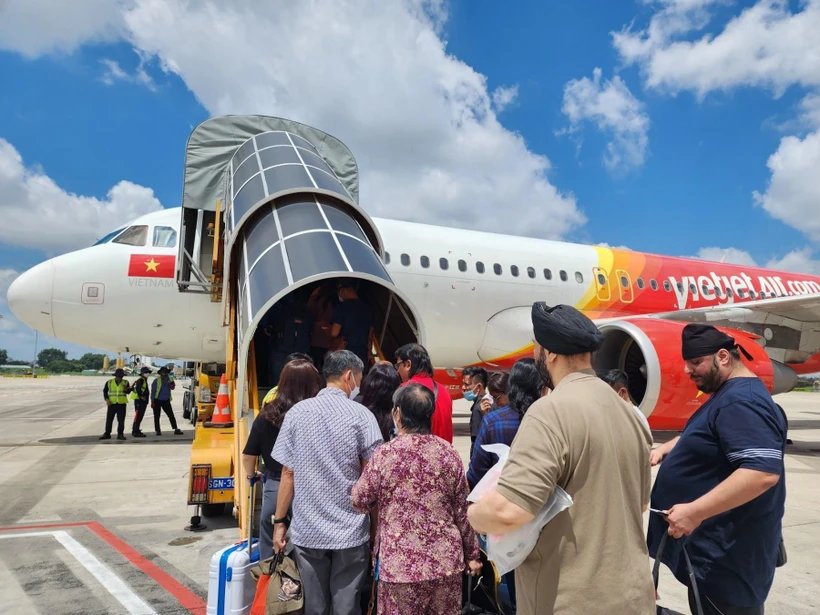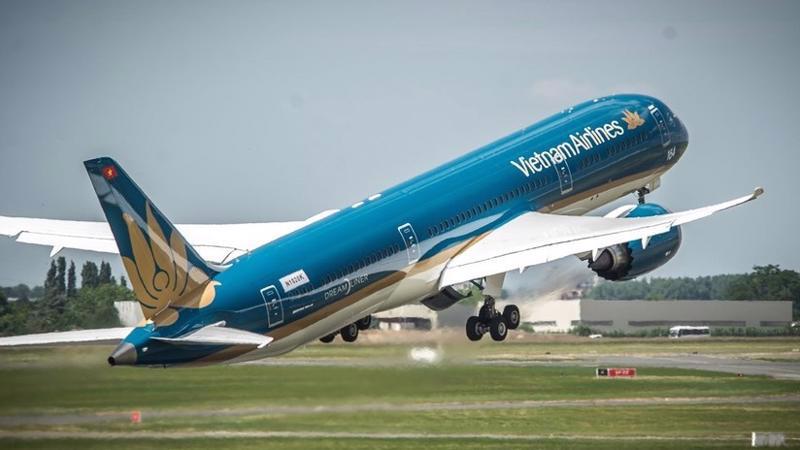Typically, every year, plane ticket prices for routes from Vietnam’s south to north and vice-versa rise to their highest levels during the two weeks before and after the Tet holiday due to greater travel demand. Ticket prices then gradually cool down and return to previous levels.
This year, however, Mr. Ngoc Tuan, head of a level one plane ticket agency in Hanoi said, nearly three weeks after Tet, airfares for flights from the north to the south continue to remain high.
According to VnExpress, most plane tickets for flights from Hanoi, Hai Phong, and Thanh Hoa to Ho Chi Minh City from the last week of February to March 3 have sold out. The remaining available tickets for flights from Hanoi to Ho Chi Minh City on March 1 are all in Business Class, at prices of over $284. For March 2, there are still Economy Class tickets available, but the lowest price is around $125 for late-night flights.
Due to higher ticket prices, Ms. Ngoc Ha from Nam Tu Liem district in Hanoi had to reschedule her trip to Ho Chi Minh City until next week. However, she said that plane tickets in the first week of March are only $41 lower than right now.
Aircraft shortages
One of the main reasons behind the current lack of tickets on domestic flights in Vietnam is the lack of operational aircraft, which have resulted in Vietnamese carriers reducing the number of flights. Due to technical issues with Pratt & Whitney engines, which are currently installed on Airbus A321 aircraft, Vietnam Airlines was forced to ground 12 of its planes, accounting for 20 per cent of its narrow-body aircraft, for engine maintenance.
The Airbus A321 is also the main type of aircraft employed on domestic routes in Vietnam. Vietjet Air has also been affected by the issue, but has not disclosed any detailed figures.
Bamboo Airways, due to its internal difficulties and restructuring activities, currently only has a fleet of eight aircraft, down by over 20 since the beginning of last year. Similarly, Pacific Airlines’ fleet is also smaller these days.

Since January, one month before Tet, to make up for the lack of available aircraft during the traditional peak period, Vietnam Airlines, Vietjet Air, and Bamboo Airways have all been leasing aircraft, including both planes and flight crews. In total, the three have leased 12 aircraft but were still unable to meet demand during the Tet holiday.
Figures from the Civil Aviation Authority of Vietnam (CAAV) show that during the period from just before to just after Tet, airports in Vietnam served 1.5 million travelers, an increase of 11 per cent year-on-year. However, the number of domestic travelers have declined by 13 per cent to 762,000, while foreign visitors increased by 50 per cent compared to 2023.
In addition, according to the owner of a ticket agency in Hanoi, the scarcity of domestic tickets on certain high-demand routes may also be due to travel agencies “hoarding” tickets for group tours.
Speaking with VnExpress, he said that just a few weeks ago the system showed that all Economy Class tickets from Hanoi to Ho Chi Minh City were sold out, with only Business Class tickets available, starting from $365. However, some travel agencies were still advertising Economy Class tickets on the route for as low as $203.
Balancing resources
After three years of grappling with the lingering effects of Covid-19, airlines are also having to adjust their resources to balance efficiency between domestic and international flights. Since the fourth quarter of 2023, some airlines have lowered flight frequencies or cut low-occupancy domestic routes to focus on international flights.
International flights are generally more profitable due to fuel surcharges varying according to the policies of each country. For example, a flight from Hanoi to Tokyo, from now until March 31, incurs a fuel surcharge of over $44.
One airline representative said that they must balance resources between domestic flights from Ho Chi Minh City or Hanoi to Quy Nhon or Nha Trang and international charter flights for foreign visitors. The director of an airport also explained that apart from the Hanoi - Ho Chi Minh City route, each international flight is as profitable as 5-7 domestic flights combined.
Not only during peak seasons like summer or Tet, many passengers have also noticed that domestic flight ticket prices have been higher since last year, with fewer options for low price tickets compared to previous years.
Explaining this, the head of a domestic airline affirmed that this is not because they incurred losses after the pandemic and are now selling higher-priced tickets to compensate. He explained that airlines have had to face soaring input costs, while domestic flight ticket prices are constrained by price caps.
For a traditional airline, before the pandemic, the cost of fuel accounted for only about 25 per cent of the ticket price, but it can now be close to 40 per cent at times. This ratio may even be higher for low-cost carriers. Most of the expenses for airlines are paid in US dollars, but exchange rates have also increased significantly.
From March 1, the price cap for most domestic routes will rise by 5 per cent. The highest ticket price cap is for flights from Hanoi to Phu Quoc Island, at a distance of more than 1280 km. On such flights, the price cap is set at $162, or $10 higher than currently. The increase to the cap may cause airfares to rise even more during high travel seasons.

Disrupted supply chains and a lack of aircraft globally have also pushed up narrow-body aircraft leasing prices by $100,000 a month. “In order to lower domestic plane tickets, input costs must come down,” the airline representative said.
These expenses have also partially contributed to some airlines hoping to acquire more aircraft to increase their operational capacity but being unable to do so, as they need to balance capabilities and allocate financial resources.
Based on the supply capacity of local carriers, the CAAV has forecast that domestic passenger traffic for the year as a whole may decline by up to 3.5 million passengers. Meanwhile, the volume of international passengers could increase by over 30 per cent to 41.8 million.
Speaking with the media on February 28, Mr. Le Hong Ha, CEO of Vietnam Airlines, warned that ticket prices for domestic flights may remain the same as in 2023. However, the airline will try to introduce a better price policy for the peak summer travel period.









 Google translate
Google translate